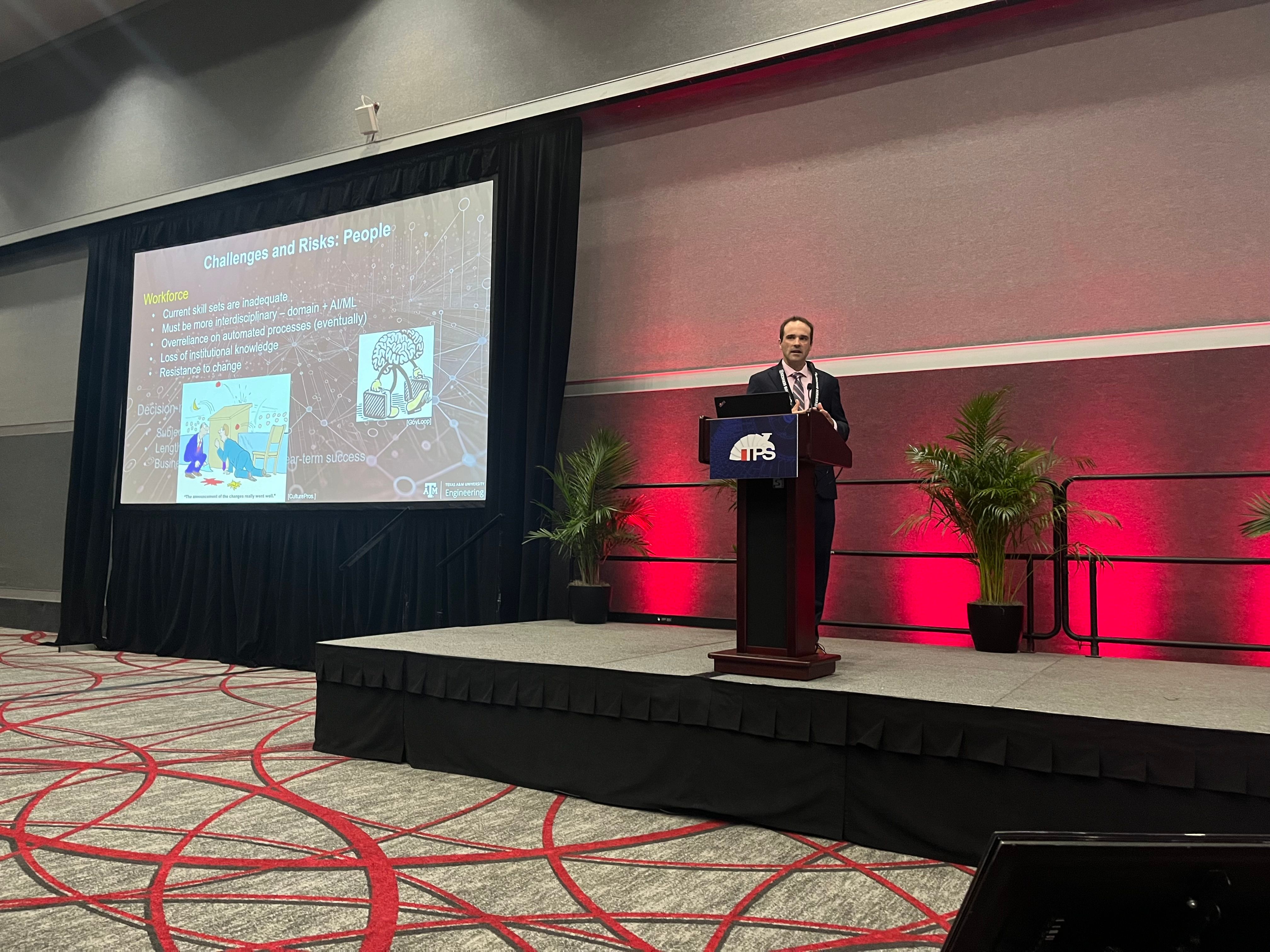TPS 2024 Keynote Focuses on the Value of AI
The theme of this year’s welcome address is you must engage with AI or you will be left behind.
The 2024 Turbomachinery & Pump Symposia (TPS) kicked off today in Houston, held August 20-22 at the George R. Brown Convention Center. This year’s welcome address was kicked off by Dr. Eric Petersen , the Professor of Mechanical Engineering and Turbomachinery Laboratory Director at Texas A&M. He gave attendees a rundown of the show’s agenda and other housekeeping items and said the call for papers for TPS 2025 is open through Oct. 23, 2024. TPS 2025 will be held Sept. 16 – 18, 2025 in Houston, with short courses starting on Sept. 15.
Dr. Douglas Allaire, Associate Professor at Texas A&M, then took the stage. He spoke about the value of AI and its challenges and risks as the new technology is embraced.
The Impact Level of AI
“The impact of AI on our industry and all industries, not just those represented here, is a business discontinuity,” Dr. Allaire said. “Think of streaming services and how they impacted the video rental industry; think about the Internet and touch screens and how they impacted the mobile phone industry; think about the companies that come to mind when I talk about these industries; think about digital photography how it impacted the film industry: for all of these discontinuities, there were companies that failed to embrace new technology and failed to innovate when they had the opportunity. They were outcompeted. So, my main message today as this AI discontinuity comes about is that you must engage, or you will be left behind.”
So, what is the value of engaging? Dr. Allaire argued that if you engage in AI and machine learning now, you can perform predictive analytics, which uses current and historical data from machine modeling and machine learning to predict maintenance needs. It enables the user to plan for asset downtime in advance.
Several years ago, the Petronas team deployed predictive analytics methods. In their first year, they identified 51 issues and with that information, they were able to save their company an estimated $17.4 M.
So, the value is already there, but the next question is what’s the value of AI tomorrow? Prescriptive analytics.
Prescriptive analytics goes beyond predictive analytics and uses data, ML-based models and now physics-based models. It not only tells when your asset is going to fail but also recommends specific actions.
Dr. Douglas Allaire, Associate Professor at Texas A&M, presents the welcome address at TPS 2024.

Digital Twins + Threads = Digital Tapestries
The key ingredient to prescriptive analytics is a digital twin. It enables root-cause analysis and quickly identifies the problem to offer tremendous value to operators. The other aspect of prescriptive analytics is a digital thread: a digital representation of a product or asset’s entire lifecycle—it’s all the information we can collect from conception to design to operation and maintenance. It can be incredibly valuable for identifying what pain points you encountered throughout the asset’s life cycle. Both digital twins and threads offer actionable insights, proactive interventions, traceability, and efficient workflows.
“These two together are called a digital tapestry, which holistically connects all the aspects of our operation, all our assets, all our business decisions to make more efficient, more optimal decision-making,” he said.
Digital tapestry is an interconnected framework of digital threads achieving prognostic analytics, which predicts the future condition of equipment and systems.
The industry is moving from predictive to prescriptive to prognostic analytics.
Challenges and Risks
Dr. Allaire laid out several challenges and risks with AI and ML. The two biggest challenges for digital transformation are data and people.
Data
In terms of data acquisition, the challenges include:
- more sensors needed
- errors, incomplete or hacked data, outdated data
- lack of historical data, biased models, and inaccurate physics-based models
- long-term maintenance of ML models and digital twins
- data integration for multiple sources and platforms
- huge volumes of data may impact data centers and processing latency
- data security: who owns it and who has access?
People
One challenge with the current workforce is their current skill sets are inadequate. They must be more interdisciplinary—domain + AI/ML. Dr. Allaire said there is an overreliance on automated processes and a loss of institutional knowledge. There is also resistance to change. Business models reward near-term success and the ROI for AI/ML is still being debated.
“It’s time to get started using AI/MI in turbomachinery,” he said.